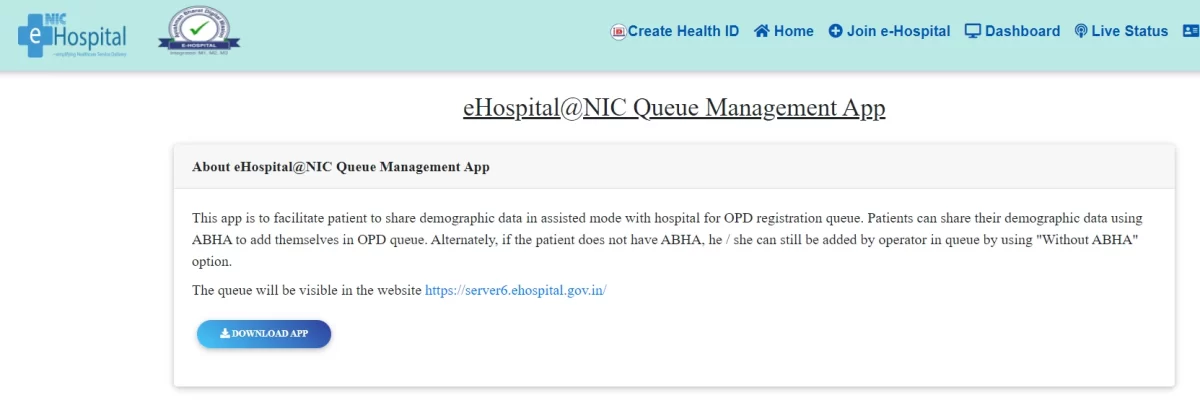What Is e-Hospital In India?
e-Hospitals, also known as electronic hospitals, are a digitalized platform that integrates technology and healthcare services to provide remote healthcare access to patients. These virtual hospitals leverage telecommunication and information technology to connect patients with doctors, nurses, and other healthcare professionals. Through e-Hospitals, medical consultations, diagnostics, prescriptions, and even follow-up appointments can be conducted remotely, minimizing the need for physical visits to traditional hospitals.
In recent years, the advancement of technology has disrupted various industries, and healthcare is no exception. One such innovative development in the Indian healthcare sector is the emergence of e-Hospitals. In this article, we will explore what e-Hospitals are, how they operate, and the impact they have on healthcare delivery in India. Let’s dive in!
Features and Functionality
Teleconsultations: e-Hospitals enable patients to consult with doctors and specialists through video or audio calls. Patients can discuss their medical concerns, receive medical advice, and even get prescriptions without visiting a physical clinic.
Electronic Medical Records (EMR): e-Hospitals maintain electronic medical records of patients, ensuring easy access to medical history, test results, and treatment plans. This allows healthcare providers to have a holistic view of a patient’s health and make informed decisions.
Online Appointment Booking: Patients can book appointments with doctors, specialists, or diagnostic centers through online portals or dedicated mobile applications. This reduces waiting times and enhances convenience.
Remote Monitoring: e-Hospitals utilize wearable devices and IoT (Internet of Things) technology to monitor patients’ health remotely. Vital parameters such as heart rate, blood pressure, and blood sugar levels can be monitored, and alerts can be sent to healthcare providers in case of any abnormalities.
E-Pharmacy: Many e-Hospitals also have integrated e-pharmacy services, allowing patients to order prescribed medications online and have them delivered to their doorstep.
What Are The Advantages of e-Hospitals?
Increased Accessibility: e-Hospitals bridge the geographical barriers and bring healthcare services to remote areas where healthcare infrastructure is limited. Patients in rural or underserved regions can now access specialized healthcare professionals without traveling long distances.
Time and Cost Savings: By eliminating the need for physical visits, e-Hospitals save patients valuable time and reduce travel expenses. Additionally, virtual consultations are often more affordable compared to in-person visits.
Enhanced Efficiency: e-Hospitals streamline administrative tasks, reduce paperwork, and improve the overall efficiency of healthcare delivery. Digital records eliminate the risk of losing or misplacing physical files, and automated processes save time for both patients and healthcare providers.
Improved Continuity of Care: With electronic medical records accessible across different healthcare settings, patients receive consistent and coordinated care. Specialists can easily access patient information, leading to better treatment decisions and reduced chances of medical errors.
Optimal Resource Utilization: e-Hospitals help optimize healthcare resources by reducing overcrowding in physical hospitals. Non-emergency cases can be effectively managed through virtual consultations, allowing hospitals to focus on critical patients.
What Is The Aim of e-Hospital?
The primary aim of e-Hospitals is to enhance the accessibility and quality of healthcare services through the integration of technology. Here are the key aims of e-Hospitals:
Increased Accessibility: e-Hospitals aim to overcome geographical barriers and bring healthcare services to underserved areas. By leveraging telecommunication and information technology, patients in remote locations can access healthcare professionals without the need for extensive travel.
Improved Convenience: e-Hospitals aim to provide convenient healthcare options to patients. Through virtual consultations and online appointment booking systems, patients can save time and effort by avoiding unnecessary visits to physical hospitals.
Efficient Healthcare Delivery: e-Hospitals aim to streamline healthcare processes and improve efficiency. By digitizing medical records, reducing paperwork, and implementing automated systems, healthcare providers can optimize their workflow, leading to quicker and more effective healthcare delivery.
Enhanced Continuity of Care: e-Hospitals focus on improving the continuity of care for patients. By maintaining electronic medical records, healthcare providers can access a patient’s complete medical history, leading to better-informed decisions and consistent treatment across different healthcare settings.
Cost-Effectiveness: e-Hospitals aim to provide cost-effective healthcare solutions. Virtual consultations and remote monitoring can reduce healthcare expenses for patients, especially those related to travel and accommodation. Additionally, e-Hospitals can optimize the utilization of healthcare resources, ensuring efficient allocation and cost savings for the healthcare system as a whole.
Improved Healthcare Outcomes: Ultimately, the aim of e-Hospitals is to improve healthcare outcomes. By providing timely access to healthcare professionals, facilitating early detection of health issues, and promoting preventive care, e-Hospitals contribute to better health management and overall well-being of patients.
By achieving these aims, e-Hospitals contribute to the overall transformation and advancement of the healthcare sector, making healthcare more accessible, efficient, and patient-centered.
What is Ehospital Integrated with?
e-Hospitals are typically integrated with various technologies and systems to facilitate seamless healthcare delivery. Here are some key components and systems that e-Hospitals may be integrated with:
Telecommunication Systems: e-Hospitals rely on telecommunication systems to facilitate remote communication between patients and healthcare providers. This includes video conferencing tools, audio calls, and messaging platforms that enable virtual consultations and communication.
Electronic Medical Records (EMR) Systems: e-Hospitals are integrated with EMR systems to maintain digital records of patients. These systems store patient information, including medical history, diagnoses, treatment plans, and test results, ensuring easy access for healthcare providers during virtual consultations or in-person visits.
Online Appointment Booking Systems: e-Hospitals often have integrated online appointment booking systems, allowing patients to schedule appointments with doctors, specialists, or diagnostic centers through dedicated portals or mobile applications. This streamlines the appointment process and reduces waiting times.
Diagnostic Systems: e-Hospitals may be connected with diagnostic systems such as radiology and pathology labs. This integration enables seamless sharing of test results and reports between healthcare providers and patients, facilitating remote diagnosis and treatment planning.
Wearable Devices and Internet of Things (IoT): Many e-Hospitals integrate with wearable devices and IoT technology to remotely monitor patients’ health. These devices, such as fitness trackers, blood pressure monitors, and glucose meters, collect and transmit vital health data to healthcare providers, enabling remote monitoring and timely intervention when needed.
E-Pharmacy Platforms: Some e-Hospitals have integrated e-pharmacy platforms, allowing patients to order prescribed medications online. This integration ensures a seamless process of prescribing and delivering medications to patients’ doorstep.
Payment Gateways: e-Hospitals often integrate secure online payment gateways to facilitate online payment for consultations, diagnostic tests, and medications. This ensures a convenient and secure payment process for patients.
Data Security Systems: To maintain patient confidentiality and comply with privacy regulations, e-Hospitals are integrated with robust data security systems. These systems employ encryption, access controls, and other security measures to protect patient information from unauthorized access or breaches.
The integration of these various components and systems enables e-Hospitals to provide comprehensive and efficient healthcare services to patients, bridging the gap between traditional healthcare settings and digital technology.
What Is e-hospital app?
An e-Hospital app is a mobile application that enables users to access healthcare services, consultations, and medical resources remotely. These apps are designed to provide a user-friendly interface and a range of features for patients to conveniently manage their healthcare needs. Here are some common features you may find in an e-Hospital app:
User Registration and Profile: Users can create an account within the app, providing their personal information, contact details, and medical history. This information helps healthcare providers understand the user’s health background and provide personalized care.
Online Appointment Booking: Users can schedule appointments with doctors, specialists, or diagnostic centers through the app. They can choose the preferred date, time, and healthcare professional, and receive confirmation and reminders for their appointments.
Virtual Consultations: The app allows users to have video or audio consultations with healthcare professionals. Users can discuss their medical concerns, share symptoms, and receive medical advice, prescriptions, or referrals from doctors remotely.
Electronic Medical Records (EMR): The app provides access to users’ electronic medical records, allowing them to view their medical history, test results, prescriptions, and treatment plans. This ensures continuity of care and allows users to share their medical information with healthcare providers when needed.
Health Monitoring: Some e-Hospital apps integrate with wearable devices or allow users to manually input health data. Users can track their vital signs, such as heart rate, blood pressure, blood sugar levels, and physical activity, and view trends over time. This information can be shared with healthcare providers for remote monitoring and assessment.
Medication Management: The app may include features to manage medication reminders, track prescriptions, and order medications online from e-pharmacies. Users can receive alerts for medication schedules, track adherence, and request refills when needed.
Health Education and Resources: e-Hospital apps often provide educational content, articles, and resources on various health topics. Users can access reliable information, health tips, and preventive care guidance within the app.
Secure Messaging: Users can communicate securely with healthcare providers through messaging features within the app. This allows them to ask follow-up questions, clarify doubts, and receive further guidance from healthcare professionals.
Payment and Billing: The app may integrate secure payment gateways to facilitate online payment for consultations, diagnostic tests, or medication purchases. Users can view their billing details, make payments, and receive digital receipts within the app.
Notifications and Reminders: The app sends notifications and reminders for upcoming appointments, medication schedules, and health-related updates to keep users informed and engaged with their healthcare.
It’s important to note that specific features may vary across different e-Hospital apps, as they are developed by different healthcare providers or organizations. However, these features generally aim to enhance accessibility, convenience, and continuity of care for users, making healthcare services more accessible and manageable through a mobile application.
What Are The Services of e-hospital In India?
e-Hospitals offer a wide range of services to patients, leveraging technology to provide healthcare access and support. Here are some common services offered by e-Hospitals:
Teleconsultations: e-Hospitals facilitate remote consultations between patients and healthcare professionals. Through video or audio calls, patients can discuss their medical concerns, receive medical advice, and get prescriptions without the need for in-person visits.
Online Appointment Booking: Patients can book appointments with doctors, specialists, or diagnostic centers through online portals or dedicated mobile applications. This allows for convenient scheduling and reduces waiting times.
Electronic Medical Records (EMR): e-Hospitals maintain digital records of patients’ medical history, diagnoses, treatments, and test results. This ensures easy access to medical information for both patients and healthcare providers, enabling better-informed decision-making and coordinated care.
Remote Monitoring: e-Hospitals utilize wearable devices and IoT technology to remotely monitor patients’ health conditions. This includes monitoring vital signs such as heart rate, blood pressure, blood sugar levels, and other health parameters. Healthcare providers can receive real-time data and alerts, enabling them to intervene promptly when necessary.
E-Pharmacy Services: Many e-Hospitals integrate e-pharmacy services, allowing patients to order prescribed medications online. These medications are then delivered to the patients’ preferred location, ensuring convenience and timely access to medications.
Second Opinion Services: e-Hospitals provide opportunities for patients to seek second opinions from specialists or renowned healthcare professionals remotely. This service helps patients make informed decisions about their health conditions and treatment options.
Health Education and Wellness Resources: e-Hospitals offer health education materials, articles, and resources on various medical conditions, preventive care, lifestyle management, and general wellness. These resources help patients gain knowledge and make informed choices regarding their health.
Mental Health Support: Some e-Hospitals offer mental health services, including virtual counseling and therapy sessions. Patients can access mental health professionals and seek support for various mental health concerns through secure video or audio calls.
Diagnostic Services: e-Hospitals may provide access to diagnostic services through partnerships with laboratories or diagnostic centers. Users can schedule tests and receive their results electronically, reducing the need for physical visits to separate diagnostic facilities.
Follow-up Care: e-Hospitals support follow-up care by allowing patients to have virtual follow-up appointments with their healthcare providers. This ensures continuity of care and eliminates the need for unnecessary in-person visits.
These services offered by e-Hospitals aim to improve healthcare accessibility, efficiency, and patient experience. By leveraging technology, e-Hospitals bring healthcare services closer to patients, minimize geographical barriers, and enhance the overall quality of healthcare delivery.
Conclusion
e-Hospitals have emerged as a transformative force in the Indian healthcare landscape, leveraging technology to make quality healthcare more accessible and convenient. With their ability to provide remote consultations, digitized records, and efficient healthcare management, e-Hospitals are revolutionizing the way healthcare services are delivered in India. As technology continues to evolve, we can expect further advancements in e-Hospital infrastructure, ultimately leading to improved healthcare outcomes for millions of people across the country.


















